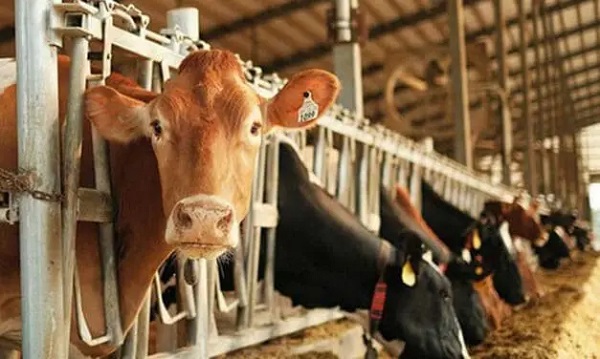RCMP
Strathcona County RCMP team up for Halloween

Strathcona County RCMP team up for Halloween
Strathcona County, Alberta – The Strathcona County RCMP and Strathcona County Enforcement Services are again teaming up with community partners this Halloween to ensure all trick-or-treaters enjoy a safe and fun evening.
Joining the team this year will be the Strathcona County Citizens on Patrol, Strathcona County Transit, Strathcona County Emergency Services and Sherwood Park Crusaders Hockey Club.
The Sherwood Park Crusaders will be out walking various neighbourhoods wearing their team jerseys and just like the Citizens on Patrol, will be extra eyes and ears for police while youngsters are going door to door filling their treat bags with goodies.
Again this year Shell Canada has joined the team and provided “Positive Tickets” that will allow youth one free admission to any of Strathcona County’s Recreation Centres. These positive tickets will be handed out to the ghosts and goblins out trick-or-treating who are observed engaging in positive behaviours on Halloween night.
Strathcona County RCMP are reminding motorists to pay extra attention while driving on Halloween night. “Drive slowly in residential areas where children are more likely to be trick-or-treating.” says Cpl. Shayne Gudmundson of the Strathcona County RCMP. “Reduce your speed, stay alert and proceed with caution when entering and exiting driveways.”
Halloween safety tips for parents and trick-or-treaters:
- Wear a light-coloured or bright costume, reflective tape or arm bands to heighten visibility.
- Make sure your costume is properly fitted to reduce the chance of tripping on it.
- Don’t go into the house for your treats; always wait outside.
- Don’t eat any treats until an adult has inspected them.
- Carry a flashlight so you can see where you are going.
- Don’t criss-cross the street or run out from between parked cars. Always go down one side of the street, cross at the corner, and then go down the other side.
- Watch for cars pulling out of driveways and backing up.
- Only approach houses that have lights on.
For some more information and safety tips visit www.strathcona.ca/halloween.
Business
Canada invests $34 million in Chinese drones now considered to be ‘high security risks’

From LifeSiteNews
Of the Royal Canadian Mounted Police’s fleet of 1,200 drones, 79% pose national security risks due to them being made in China
Canada’s top police force spent millions on now near-useless and compromised security drones, all because they were made in China, a nation firmly controlled by the Communist Chinese Party (CCP) government.
An internal report by the Royal Canadian Mounted Police (RCMP) to Canada’s Senate national security committee revealed that $34 million in taxpayer money was spent on a fleet of 973 Chinese-made drones.
Replacement drones are more than twice the cost of the Chinese-made ones between $31,000 and $35,000 per unit. In total, the RCMP has about 1,228 drones, meaning that 79 percent of its drone fleet poses national security risks due to them being made in China.
The RCMP said that Chinese suppliers are “currently identified as high security risks primarily due to their country of origin, data handling practices, supply chain integrity and potential vulnerability.”
In 2023, the RCMP put out a directive that restricted the use of the made-in-China drones, putting them on duty for “non-sensitive operations” only, however, with added extra steps for “offline data storage and processing.”
The report noted that the “Drones identified as having a high security risk are prohibited from use in emergency response team activities involving sensitive tactics or protected locations, VIP protective policing operations, or border integrity operations or investigations conducted in collaboration with U.S. federal agencies.”
The RCMP earlier this year said it was increasing its use of drones for border security.
Senator Claude Carignan had questioned the RCMP about what kind of precautions it uses in contract procurement.
“Can you reassure us about how national security considerations are taken into account in procurement, especially since tens of billions of dollars have been announced for procurement?” he asked.
“I want to make sure national security considerations are taken into account.”
The use of the drones by Canada’s top police force is puzzling, considering it has previously raised awareness of Communist Chinese interference in Canada.
Indeed, as reported by LifeSiteNews, earlier in the year, an RCMP internal briefing note warned that agents of the CCP are targeting Canadian universities to intimidate them and, in some instances, challenge them on their “political positions.”
The final report from the Foreign Interference Commission concluded that operatives from China may have helped elect a handful of MPs in both the 2019 and 2021 Canadian federal elections. It also concluded that China was the primary foreign interference threat to Canada.
Chinese influence in Canadian politics is unsurprising for many, especially given former Prime Minister Justin Trudeau’s past admiration for China’s “basic dictatorship.”
As reported by LifeSiteNews, a Canadian senator appointed by Trudeau told Chinese officials directly that their nation is a “partner, not a rival.”
China has been accused of direct election meddling in Canada, as reported by LifeSiteNews.
As reported by LifeSiteNews, an exposé by investigative journalist Sam Cooper claims there is compelling evidence that Carney and Trudeau are strongly influenced by an “elite network” of foreign actors, including those with ties to China and the World Economic Forum. Despite Carney’s later claims that China poses a threat to Canada, he said in 2016 the Communist Chinese regime’s “perspective” on things is “one of its many strengths.”
Great Reset
EXCLUSIVE: The Nova Scotia RCMP Veterans’ Association IS TARGETING VETERANS with Euthanasia

I just received an email from a retired member of the RCMP…
“I served for 32 years on the West Coast and retired in 2019. As a Christian and a retired member of the RCMP I wanted to share this with you. I’m trying to wrap my head around this shocking email. I’m shocked it’s come to this.” – L.K
SATURDAY, NOV. 22, 2025
1:30-3:00 PM CHURCH HALL, OLD SACKVILLE ROAD, MIDDLE SACVILLE, NS, B4E 1R3.
On November 20th, an email quietly dropped into the inboxes of Nova Scotia RCMP veterans. Standard, polite and in true Canadian fashion formal and sanitized. This was no mistake, this wasn’t information. This was something different.
This was grooming.
Yes I said it, coercion.
The “opportunity” was a “Medical Assistance in Dying (MAID) Program in Nova Scotia”
This is a state-aligned institutions normalizing death as a service to the very people they already failed to support in life .This was a information session, to “educate” veterans who’s rates of PTSD and suicidality were already sky hight. How they can apply or use MAID.
The invited speaker?
Dr. Gordon Gubitz
Location? None other than a place of worship, a church hall. The target audience?
VETERANS.
This is what I’ve been talking about, welcome to the soft-coercive stage of Canada’s MAID regime.
Let’s meet Dr. Gordon Gubitz. The same Dr. Gubitz whois a MAID assessor and provider (killer) is the Clinical Lead for MAID in Nova Scotia, which means MAID is his not only his passion but spends his work focused on ending lives. This “Dr” sits on the board of CAMAP, the pro death organization that creates all the pathways for Canadians to be killed while manipulating the court systems in their favour. More death to them is the goal. This “Dr” helped write the national MAID curriculum and trains doctors on how to present MAID as a “care option.” This guy is literally a death pusher and peddler of the dark.
Think of him a the drug dealer for death.
They didn’t invite a trauma specialist.
They didn’t invite a palliative expert.
They didn’t invite a police mental-health advocate.
They didn’t invite a mental health expert
They didn’t invite a Dr who looks at psychedelic assisted therapy
They didn’t invite hope. They only invited death.
Kelsi Sheren is a reader-supported publication.
To receive new posts and support my work, consider becoming a free or paid subscriber.
Nova Scotia RCMP veterans invited a man whose job is to facilitate, provide and promote nothing but death, and whose organization teaches clinicians how to introduce MAID (assisted SUICIDE) to patients who didn’t ask for it, bring it up or want it in their life.
Let me explain something, If you’re a veteran dealing with PTSD, chronic pain, TBI, disability, or bureaucracy-induced despair, this isn’t “education.”
This is targeted psychological pressure.
Coercion, CAMAP and Dying with Dignity’s claim to fame.
No one will say the words out loud. No one will write “we think some of you should consider dying.”
They don’t need to, when just dangling the carrot is good enough to get the job done.
Coercion today is subtle, normalized in the community. It’s dressed up like Christmas cookies in a church call, framed as loving “support” being held by one of the most prolific death pushers in the game.
Simply funnelling veterans into the system one “information session” at a time. Like cattle through the gates of hell, with CAMAP waiting in the shadows. This time not with a bold gun. They would see that as “too humane”, but with a pen, check list, a needle and a paralytic.
Canada already proved it’s willing to dangle MAID (assisted suicide, murder, early death) in front of struggling veterans. I helped break these stories and bring our veterans stories to the masses. I’m interviewing more by the day, who’ve been offered death over life illegally.
VAC employees got caught offering MAID to veterans who never asked for it, including one trying to get a wheelchair ramp, my friend Christine.
So do me a favour spare us the “this is innocent” act.
Veterans have been coerced before, and it’s happening again right in front of your faces. Now the RCMP Veterans’ Association is rolling out the red carpet for the prevailers of death. The dark ones who feed on the souls of those who couldn’t bare to take another breath.
This is not an “opportunity.”
This is a sales pitch.
And the product is your death.
People keep asking me why veterans are being targeting? Because they’re the perfect targets, don’t you see?
Kelsi Sheren is a reader-supported publication.
To receive new posts and support my work, consider becoming a free or paid subscriber.
Veterans, on the daily are dealing with chronic pain, combat trauma, moral injury, sanctuary trauma, disability, suicidality, lack of services, financial strain, bureaucratic obstruction and the government doesn’t just know know it, it caused it and it supports it and so do the MAID, pro death cult architects.
The MAID lobby knows veterans are “high-yield” candidates, and not because they want to die, but because the system has already worn them down, like water slowly dripping over the rocks. The Liberal government just cut OVER 4 BILLION in care for veterans. Veterans aren’t being shown the full picture, they aren’t given any hope. They’re being shown the early exit. What we call in some circles, being shown the path to “self-selection.”
This RCMP veterans email is a soft-touch version of coercion if I’ve ever seen one.
“We’re not telling you to choose MAID… we’re just putting the idea on the table, in a friendly community space, with a trusted expert who helps design the national MAID system.” Who’s job is to provide you with all the pathways to wanting to kill yourself.
That’s how you manipulate a vulnerable population without leaving fingerprints.
Dr. Gubitz isn’t neutral. He is the system.
Gubitz isn’t walking into that church as an independent medical educator.
He is walking in as the clinical gatekeeper for MAID in Nova Scotia, IE. HELL. He’s nothing more than one of the ideological engines behind national MAID training. A CAMAP insider, the organization pushing to expand and normalize MAID (assisted SUICIDE) at every level of “healthcare,” if you can even call it that anymore. CAMAP literally publishes guidance on how clinicians should bring up MAID as a care option. Not reactively. Proactively.
When you pair a vulnerable group with a man trained to present MAID as “equitable access,” your “information session” becomes a recruitment funnel.
HOW IS EVERYONE OK WITH THIS?
You are directly influencing and priming veterans for death under the banner of “support.” It’s an illusion, it’s predatory behaviour! It’s not informed consent in any way. It’s manipulation.
And holding it in a church? That’s strategic psychological laundering.
Churches are trusted spaces. They lower defences, help you to open your mind. Churches to most signal moral legitimacy so hosting a MAID talk in a church hall tells veterans “your community approves. Your faith approves this is acceptable, this is dignified, you don’t have to fight or feel guilty, ”
It cloaks a controversial, ethically fraught practice in community warmth. It’s taking advantage of the safety and sanctity of church.
That’s not an accident.
It’s a tactic.
This wreaks of propaganda wrapped in hospitality.
This is the playbook of a system that wants to solve suffering by eliminating the sufferer.
Canada won’t fix the care gaps. It won’t fix the mental-health crisis. It won’t fix VAC’s failures and it sure as hell won’t fix disability supports.
But it will happily fund a national MAID curriculum, expand eligibility, remove guardrails, and now apparently send MAID providers on a tour of vulnerable communities.
Veterans have always been canaries in Canada’s moral coal mine.
If the state can normalize MAID to the people who wore its uniform, it can normalize it to anyone. And that’s the point.
This story isn’t about one email. It’s about a culture shift engineered from the top down.
This is how you create acceptance – – >
First, make MAID look compassionate.
Then, bring it into community spaces.
Then, present to vulnerable groups.
Then, call it “support.”
Then, remove the stigma.
Then, remove the safeguards.
Then, expand eligibility.
Then, tell the public: “People are choosing MAID because it’s dignified.”
They leave out the part where the system helped manufacture despair.
Veterans deserve better than an invitation to die.
They deserve care, treatment, advocacy, and someone who doesn’t treat their suffering as a problem to be erased.
Not a church basement with coffee and a state-aligned MAID architect explaining their “options.”
This email isn’t benign.
It is a warning, one Canada should have heeded years ago.
If the country is comfortable offering death to the people who served it, it’s comfortable offering it to anyone.
And that’s exactly what’s happening.
Please feel free to call or email them and let them know how this makes you feel.
KELSI SHEREN
– – – – – – – – – – – – –
One Time Donation! – Paypal – https://paypal.me/
Buy me a coffee! – https://buymeacoffee.com/
Youtube – https://www.youtube.com/@
Substack: https://substack.com/@
TikTok – https://x.com/KelsiBurns
Listen on Spotify:
|
|
The Kelsi Sheren Perspective
Kelsi Sheren Podcast |
SUPPORT OUR SPONSORS
– – – – – – – – – – – –
Ketone IQ- 30% off with code KELSI – https://ketone.com/KELSI
Good Livin – 20% off with code KELSI – https://www.itsgoodlivin.com/?
Brass & Unity – 20% off with code UNITY – http://brassandunity.com
Kelsi Sheren is a reader-supported publication.
To receive new posts and support my work, consider becoming a free or paid subscriber.
-

 Crime1 day ago
Crime1 day agoBrown University shooter dead of apparent self-inflicted gunshot wound
-

 Business2 days ago
Business2 days agoCanada Hits the Brakes on Population
-

 Frontier Centre for Public Policy2 days ago
Frontier Centre for Public Policy2 days agoCanada Lets Child-Porn Offenders Off Easy While Targeting Bible Believers
-

 Health21 hours ago
Health21 hours agoRFK Jr reversing Biden-era policies on gender transition care for minors
-

 Agriculture2 days ago
Agriculture2 days agoWhy is Canada paying for dairy ‘losses’ during a boom?
-

 Alberta23 hours ago
Alberta23 hours agoAlberta’s new diagnostic policy appears to meet standard for Canada Health Act compliance
-

 Business2 days ago
Business2 days agoWhite House declares inflation era OVER after shock report
-

 Business1 day ago
Business1 day agoTrump signs order reclassifying marijuana as Schedule III drug













